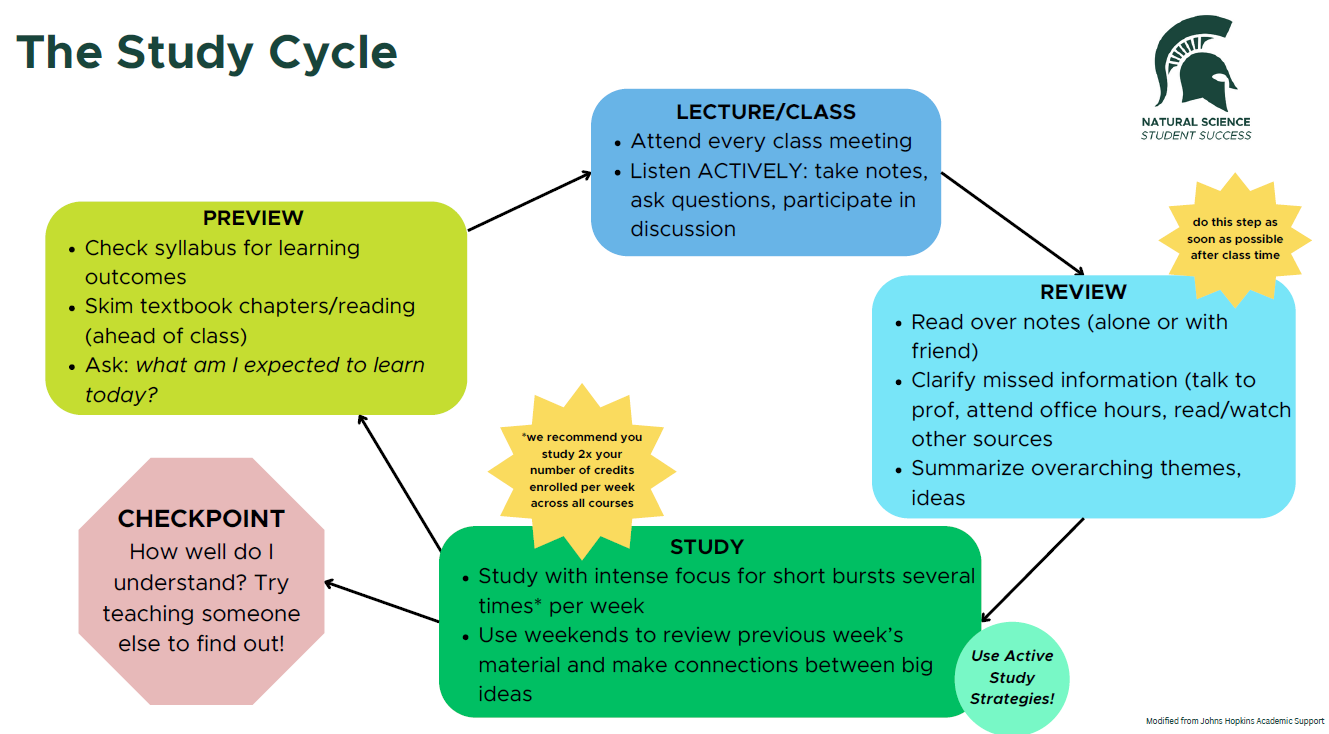The Study Cycle
This is a general pattern that is recommended to follow that can lead to successful outcomes in student understanding.

Going from Passive Studying to Active Studying
Passive studying typically only involves surface-level work - such as re-reading notes, re-watching lectures or writing notes in class word-for-word from the presentation slides. Practices usually only promote the "illusion of knowledge," meaning a student can follow what's going on, but will often easily forget and lose the learning over time. Active studying involves student-led practices that reinforce learning material piece-by-piece to seek and synthesize understanding. These practices help “train the brain” to process information into long-term memory by intentional (and planned) repetition, engaging with material, self-testing and making connections.
| Class Material | Ways to Active Study | Why these are effective |
|---|---|---|
| PowerPoint slides |
|
|
| Lecture Notes |
|
|
| Textbook or homework problems |
|
|
| Readings and articles |
|
|
| Lab reports |
|
|